Accurate data is critical for marketing success in 2025. Without it, campaigns fail, budgets are wasted, and opportunities are lost. Here’s a quick look at the top 5 tools that help ensure cross-platform data accuracy by integrating, cleaning, and synchronizing data across platforms like Google Ads, Facebook, and CRMs:
- Fivetran: Great for large enterprises with complex data systems. It offers real-time synchronization, over 300 pre-built connectors, and robust security features.
- Hevo Data: Ideal for mid-sized businesses. A no-code platform with automated duplicate removal and an intuitive interface for non-technical teams.
- Supermetrics: Perfect for agencies and consultants. Simplifies cross-channel attribution with automated reporting and custom fields.
- Integrate.io: Best for industries needing GDPR compliance and real-time data enrichment. Offers low-code automation and fast implementation.
- Improvado: Tailored for e-commerce brands managing large product catalogs. Automates analytics, consolidates data, and reduces manual reporting time.
Quick Comparison Table
| Tool | Best For | Key Features | Pricing Model |
|---|---|---|---|
| Fivetran | Large enterprises | Real-time sync, 300+ connectors, security-focused | Monthly Active Rows |
| Hevo Data | Mid-sized businesses | No-code, duplicate removal, user-friendly | Free tier up to 1M events |
| Supermetrics | Agencies, consultants | Cross-channel attribution, automated reporting | Custom pricing |
| Integrate.io | GDPR-compliant industries | Real-time enrichment, low-code workflows | Custom pricing |
| Improvado | E-commerce brands | Data normalization, SKU management | Custom pricing |
To choose the right tool, consider your business size, data complexity, and compliance needs. Start with free trials or demos to find the best fit for your marketing goals.
Marketing Data Integration is Broken - Here’s How Teams Are Fixing It
How We Selected These Tools
Choosing the best tools for ensuring cross-platform data accuracy involves a detailed and thoughtful process. With organizations now using an average of 130 apps, we focused on how these tools perform in real-world scenarios, what users say about them, and their technical strengths. Here's a breakdown of the criteria that helped us identify the top options.
Evaluation Criteria
Integration breadth was a top priority. We looked for tools with pre-built connectors that seamlessly work with platforms like Google Ads, Facebook, Salesforce, and HubSpot. Tools that offered real-time monitoring and automatic cross-referencing were especially valuable, as they help prevent outdated or incorrect data.
Scalability was another crucial factor. We tested how well each tool could handle sudden increases in data, such as during high-traffic events like Black Friday.
We also reviewed compliance standards, ensuring each tool met SOC 2 and GDPR requirements and offered flexible data residency options.
Data quality checks were central to our evaluation. The best platforms provided features like accuracy validation, completeness monitoring, format consistency, and cross-platform synchronization. Tools that combined automated error detection with customizable validation rules stood out, as they allow teams to adapt the system to their specific needs.
User Reviews and Ease of Use
We dived into reviews on platforms like G2, Capterra, and industry forums, paying close attention to feedback from non-technical users.
For many teams, ease of use was a deciding factor. Some tools, though powerful, demand complex configurations or SQL expertise, which can be a hurdle for marketing teams. We gave preference to platforms with intuitive dashboards and user-friendly interfaces, enabling non-technical users to manage data independently.
The learning curve and support resources also played a big role. Tools offering detailed tutorials, responsive customer support, and active user communities scored higher. Platforms with dedicated onboarding and training programs often saw better adoption rates among marketing teams.
These user-focused insights complemented our technical reviews, ensuring a well-rounded assessment. We found that tools combining automated data checks with customizable rules - and allowing for manual oversight when needed - were the most effective.
Finally, we considered implementation time and technical requirements. Tools that could be set up quickly and required minimal technical expertise allowed marketing teams to maintain data accuracy without long delays or steep learning curves.
Feedback from marketing managers on forums and at industry events further reinforced which features are indispensable when campaigns are running at full speed.
Top 5 Tools for Cross-Platform Data Accuracy
After thorough testing and evaluation, these five platforms emerged as top contenders for maintaining data accuracy across multiple marketing channels. Each tool offers distinct strengths, from automated data normalization to advanced marketing-focused features, ensuring seamless and reliable data integration.
Fivetran
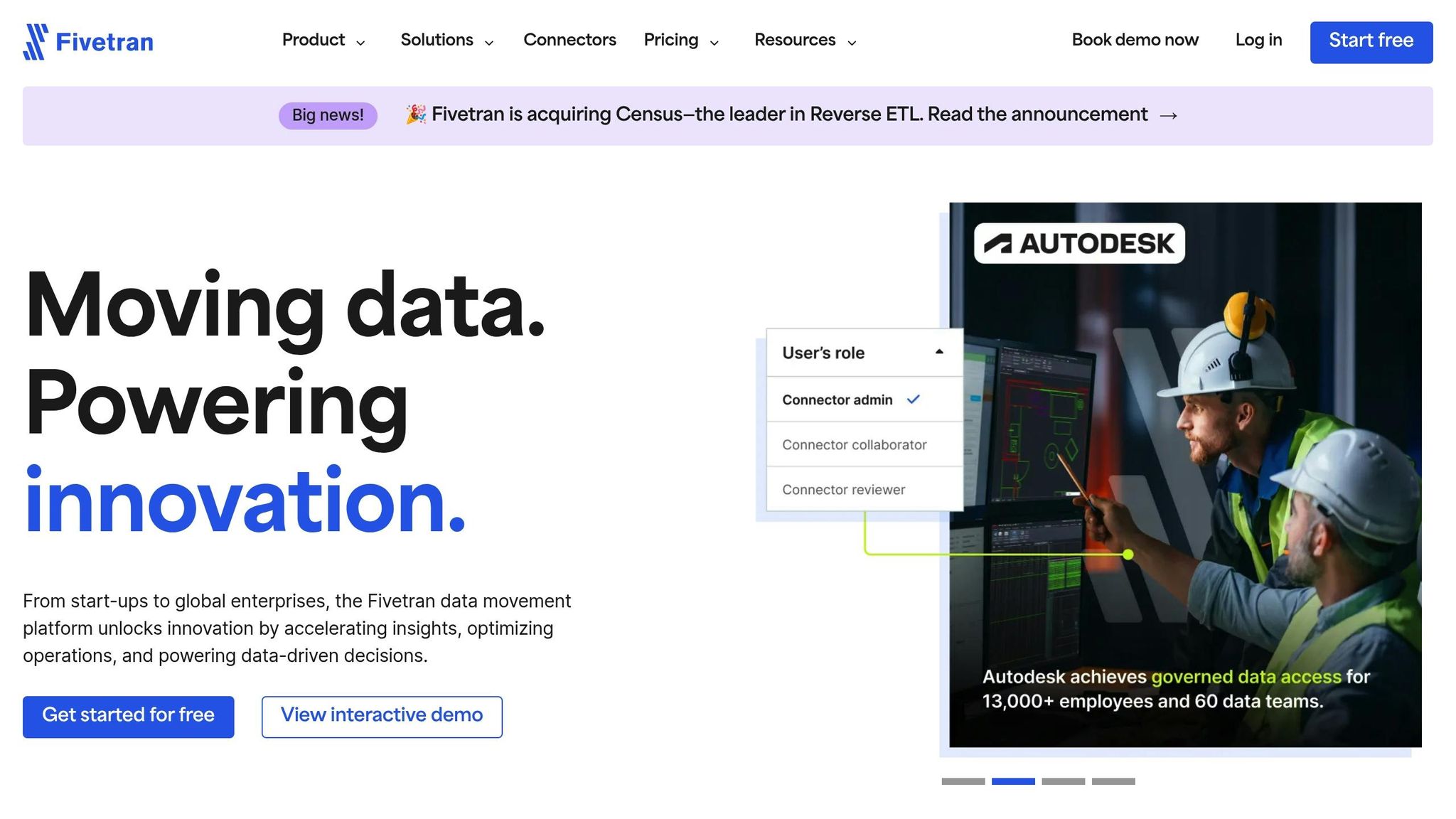
Fivetran simplifies automated data pipeline management with over 300 pre-built connectors, making it a great fit for enterprises handling complex data systems. It normalizes data within its VPC, eliminating the need for warehouse compute. One standout feature is its idempotent sync, which prevents duplicate data during recovery from failures. The platform syncs data incrementally and adjusts to source changes, with customizable sync intervals ranging from every minute to every 24 hours. Users can also control data selection by excluding specific columns or tables, while security features like column masking and encryption ensure data protection during transit and storage.
Best for: Large enterprises needing real-time synchronization across numerous platforms, particularly those with technical teams capable of managing its programmatic features.
Hevo Data
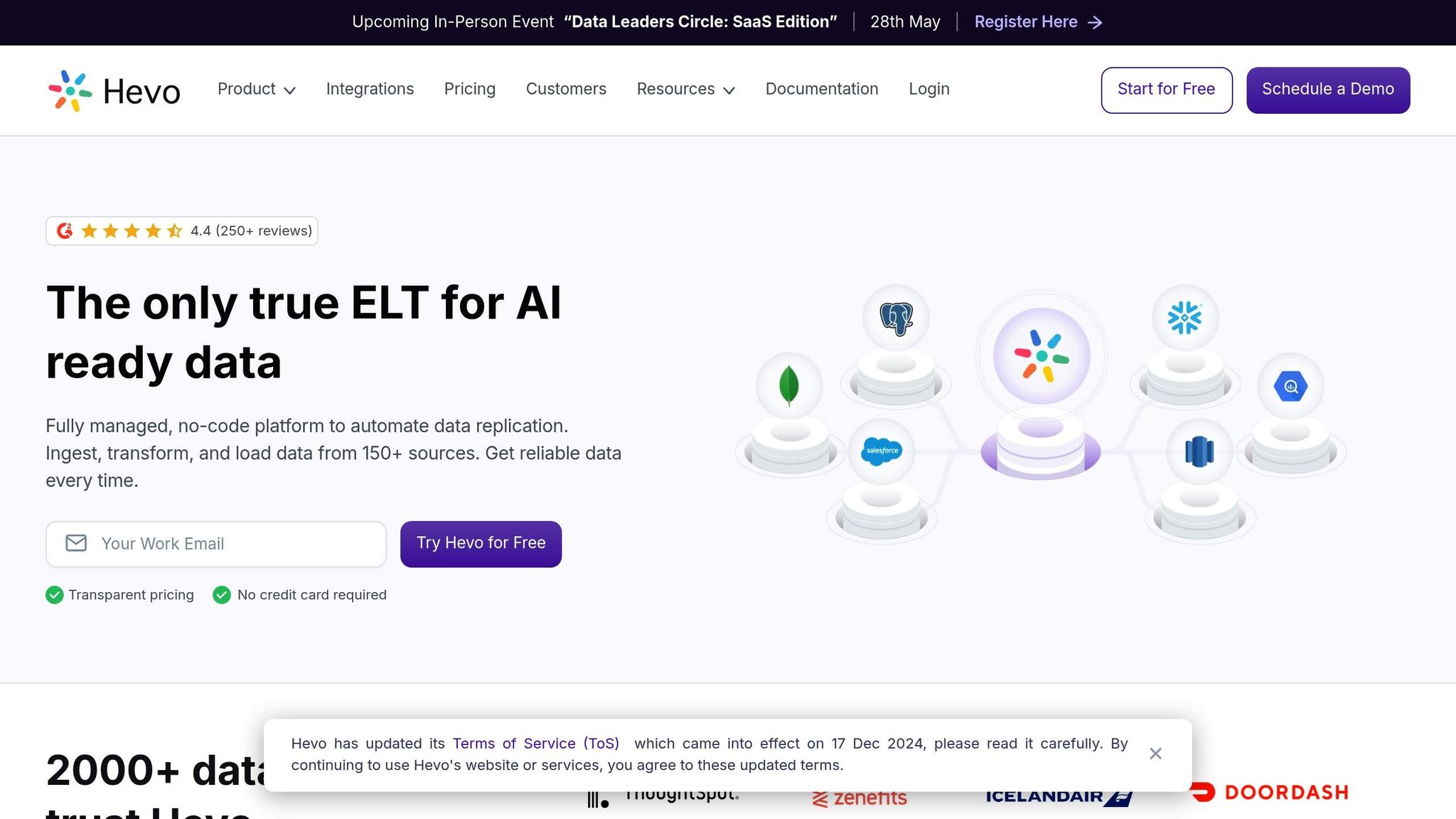
Hevo Data focuses on no-code data mapping, making it user-friendly for teams without deep technical skills. Its automated duplicate removal and intuitive interface are tailored for marketing teams seeking simplicity and reliability in data integration.
Best for: Mid-sized businesses with marketing teams that need an easy-to-use, dependable solution for data integration.
Supermetrics
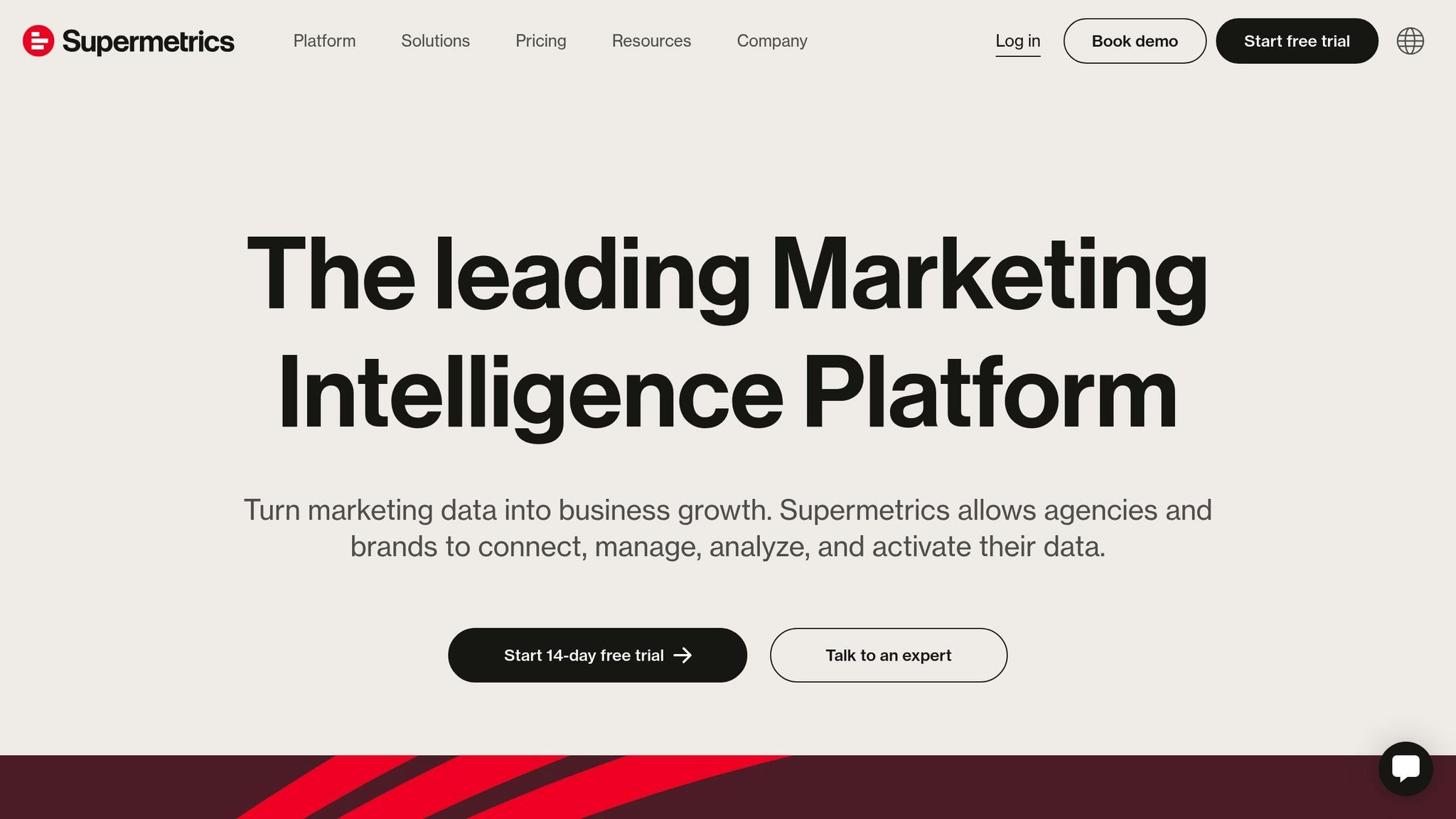
Supermetrics is designed for agencies and consultants, offering precise controls and timestamp alignment to improve cross-channel attribution. Custom fields allow for advanced categorization, while automated reporting eliminates the need for manual data collection. Additional features include secure data source login sharing and the Marketing Intelligence Cloud, which enables effective data blending.
Best for: Digital marketing agencies and consultants aiming to streamline client reporting, track ad spend across platforms, and perform detailed attribution analysis.
Integrate.io
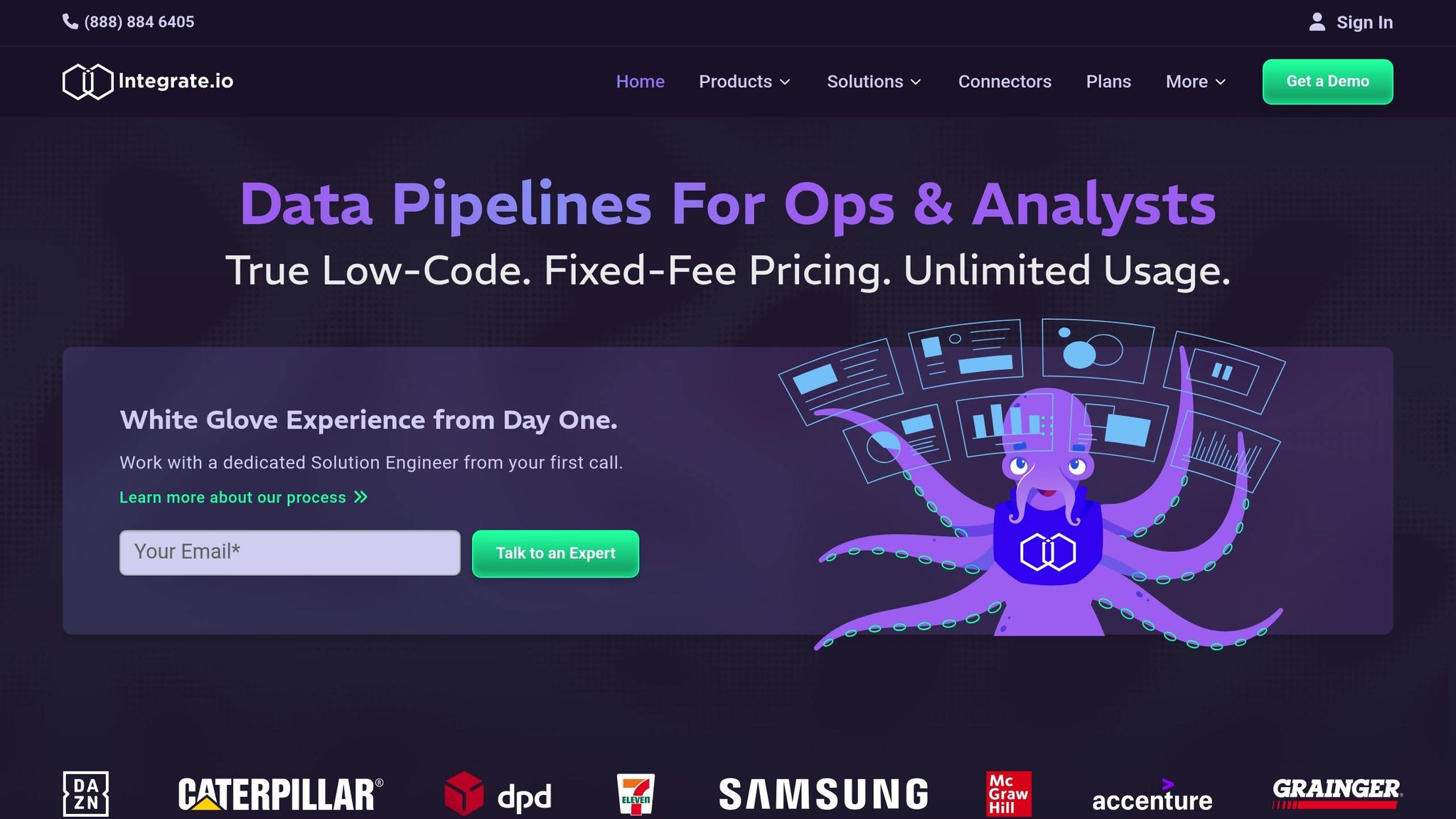
Integrate.io stands out with its GDPR-compliant connectors and compatibility with legacy systems, reducing implementation time by up to 95%. According to user feedback, 74% of customers have operational pipelines within the first week. It’s particularly effective for real-time data enrichment, making it ideal for industries that rely on up-to-the-minute customer insights. Its low-code approach automates complex workflows, minimizing the need for extensive development resources.
"With Integrate.io, everything is seamless and flexible. You actually enjoy doing data migration. In the past, it was a nightmare, and now you want to push data all the time, and it's very cool."
– Maxime Verger Del Bove, Director of Analytics
Best for: Industries such as travel that require real-time data enrichment and integration, especially where GDPR compliance and legacy system support are critical.
Improvado
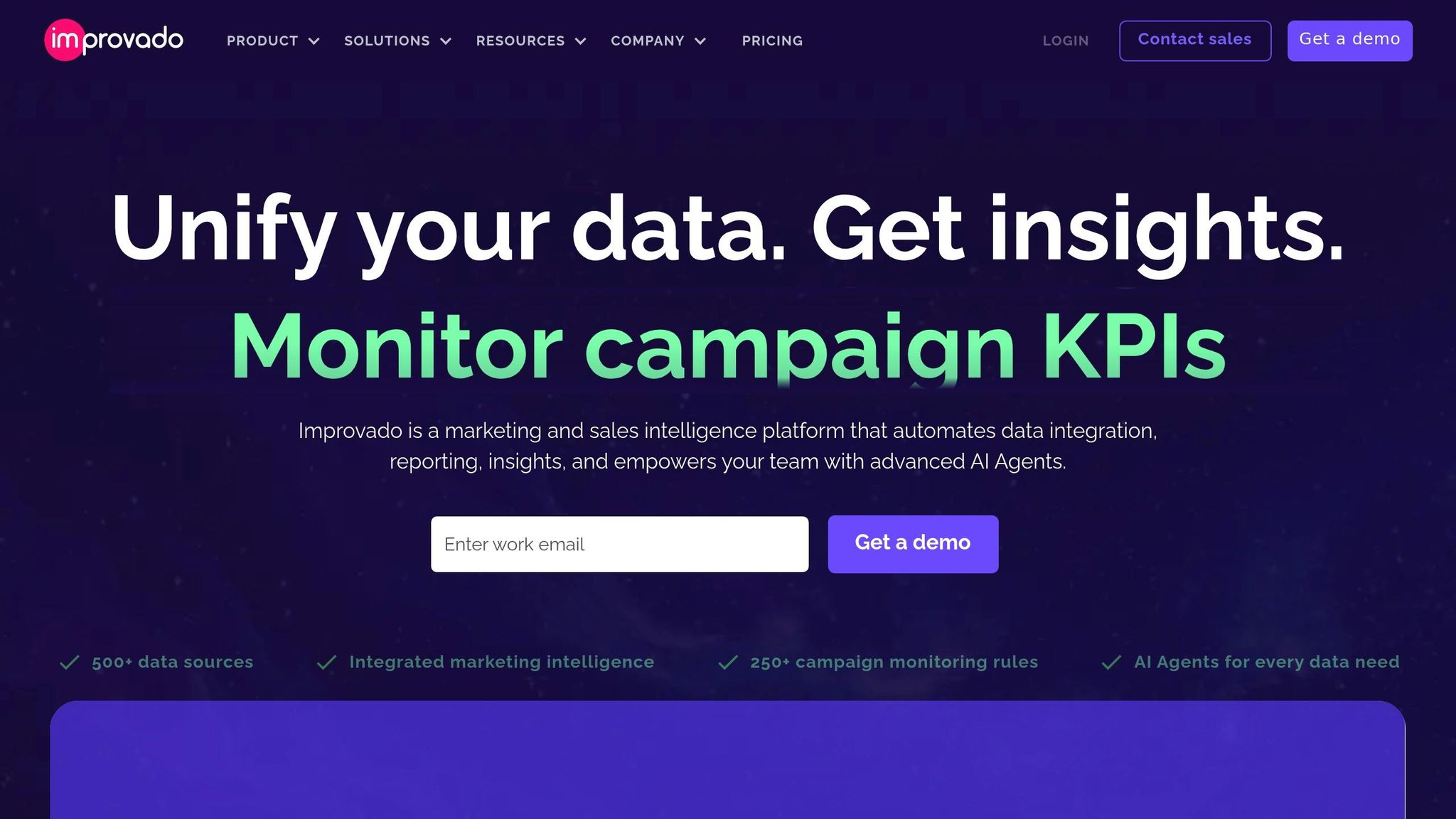
Improvado is tailored for marketing teams, offering specialized data normalization and SKU catalog management. It’s a top choice for e-commerce brands managing complex product data across multiple channels. The platform automates routine analytics, cutting manual reporting time by 90% and saving up to 30% of marketing resources annually. It consolidates data from various platforms into unified dashboards, helping teams make strategic decisions more efficiently.
"We now rely fully on Improvado for multiple dashboards that we use for day-to-day marketing operations and strategy, as well as for presentations to executive leadership."
– Waleed Noury, Senior Media Analyst at Activision
Best for: E-commerce brands and retailers with extensive product catalogs, particularly in sectors like food & beverages, entertainment, and gaming.
Next, explore our feature comparison table to find the tool that aligns best with your business needs.
sbb-itb-5174ba0
Tool Comparison
Feature Comparison
Each of these tools brings something different to the table. For instance, Supermetrics connects with more than 70 marketing and analytics platforms, while Improvado takes it up a notch by integrating with over 500 sources, making it a great fit for businesses with intricate marketing setups. Pricing models also vary significantly. Fivetran uses a Monthly Active Rows model, and Hevo Data offers a free tier that supports up to 1 million events per month. Meanwhile, Integrate.io and Improvado rely on custom pricing tailored to a business's specific needs. This range of options gives companies the flexibility to choose a tool that aligns with their operational and budgetary requirements. The next step is to assess how well these tools align with your business size and goals.
Which Tool Fits Your Business Size
Small Businesses (annual revenue $50K–$500K) often prioritize simplicity and affordability. If you're in this category, Hevo Data could be a solid choice with its intuitive interface and free tier. On the other hand, small agencies and consultants might lean toward Supermetrics for its powerful integrations that simplify marketing data workflows.
Mid-Sized Companies (annual revenue $500K–$10M) typically need tools that can handle more complex data needs. Integrate.io shines here with its efficient data management features, while Improvado is ideal for e-commerce businesses juggling large product catalogs, as it minimizes the need for manual reporting.
Large Enterprises (annual revenue over $10M) demand tools that are both scalable and secure. Fivetran is a standout in this category, offering enterprise-level features and flexible pricing that can handle complex data architectures and meet strict compliance standards.
Beyond your current size, it’s important to think about where your business is headed. If rapid growth is on the horizon, tools like Fivetran and Integrate.io are worth considering - they’re designed to scale alongside your evolving data management needs.
How to Choose the Right Tool
When selecting the right tool for your business, consider factors like your business size, data complexity, and compliance needs. These elements shape how well a tool aligns with your marketing goals and budget. As a general guideline, allocate 5–7% of your marketing budget if you're a startup, 7–10% for growth-stage businesses, and 10–15% for enterprises.
Business Size
Your business size will directly influence your tool requirements.
- Small businesses typically need basic tracking and reporting features, which range in cost from $10,000 to $25,000 annually. Look for tools that integrate seamlessly with familiar software like Microsoft Excel and offer free trial options to test functionality.
- Growth-stage businesses often require tools with more advanced features, such as deeper attribution analysis and conversion rate optimization. Budgets for these tools usually fall between $25,000 and $75,000 per year.
- Enterprises need robust automation and forecasting capabilities, with similar budgets of $25,000 to $75,000 or more annually.
Data Complexity
The complexity of your data is another critical factor. Businesses operating on a single channel can get by with simpler tools, while multi-channel operations often need enterprise-level solutions to handle more advanced analytics questions.
Compliance Requirements
Regulations like GDPR and CCPA also play a big role in tool selection. Opt for tools that include features such as data anonymization, pseudonymization, and secure data storage and transfer. These capabilities help protect user privacy. Additionally, some analytics tools focus on privacy by providing essential website metrics without relying on cookies or tracking personal data.
Preparation and Implementation
Before committing to a tool, make sure your data is clean and validated. Train your team to use the tool effectively, and choose a solution that can grow with your business needs. Defining clear goals before implementation will ensure the tool aligns with your specific requirements.
Next Steps for Marketers
Start by exploring free trials or demo versions of potential tools. This hands-on approach will give you a feel for each platform's interface and capabilities, helping you determine which one integrates best with your existing systems.
For a detailed comparison of marketing analytics tools, check out the Marketing Analytics Tools Directory. This resource provides information on real-time analytics, campaign performance tracking, audience insights, and business intelligence tailored for businesses of all sizes.
If you're new to analytics tools, consider using implementation packages, which start at around $1,725, to ensure proper setup and configuration. Additionally, keep in mind that deterministic matching accuracy can reach 80–90%, a crucial metric when evaluating a tool's performance.
FAQs
How can I choose the right data accuracy tool for my business needs?
Choosing the right data accuracy tool hinges on a few key factors: the size of your business, the complexity of your data, and your specific objectives. Begin by determining the type of data you handle - whether it's structured, unstructured, or massive datasets. This step will help guide you toward tools that best suit your needs.
After that, assess your organization's priorities. For instance, if you need to create detailed reports, tools designed for data visualization, like Tableau, might be a great fit. On the other hand, if your focus is on merging data from various sources, platforms specializing in data integration will be more useful. It’s also essential to consider your team’s technical expertise and ensure the tool works well with your current systems, allowing room for growth as your data scales up.
By keeping these points in mind, you’ll be better equipped to choose a tool that aligns with your goals and streamlines your data management efforts.
What essential compliance features should a cross-platform data accuracy tool have to meet GDPR and SOC 2 requirements?
To comply with GDPR and SOC 2 standards, a cross-platform data accuracy tool should include a few essential features:
- Data Encryption: Safeguards sensitive information by encrypting data during transfer and while stored.
- Access Controls: Limits data access to authorized users through strong authentication and permission settings.
- Audit Trails: Logs every instance of data access and modifications, ensuring accountability and traceability.
- Incident Response Plans: Establishes a clear process for addressing potential data breaches, including timely notifications and corrective actions.
These features not only protect sensitive data but also help your organization meet key compliance requirements, reinforcing trust with stakeholders.
Why are ease of use and reliable support essential when choosing a data accuracy tool for non-technical marketing teams?
Ease of use and reliable support are key factors for non-technical marketing teams when choosing a data accuracy tool. These teams often don't have the technical expertise to navigate complicated software, so tools with simple, user-friendly interfaces - like drag-and-drop functionality - allow them to manage data effectively without needing extensive training. This not only streamlines workflows but also helps minimize mistakes.
Equally important is strong customer support. Fast, effective assistance ensures that any problems are quickly addressed, enabling teams to get the most out of the tool. When combined, an intuitive design and dependable support lead to more precise data handling and improved marketing results, giving teams the confidence to make smarter, data-driven decisions.


